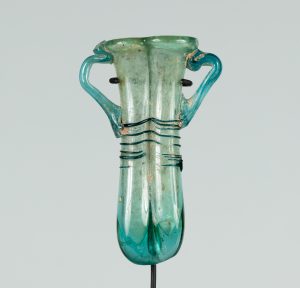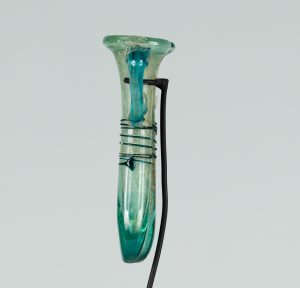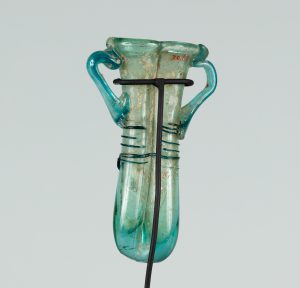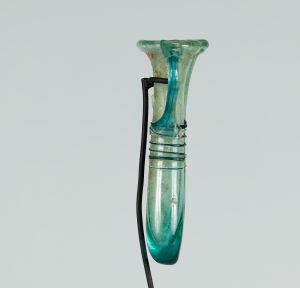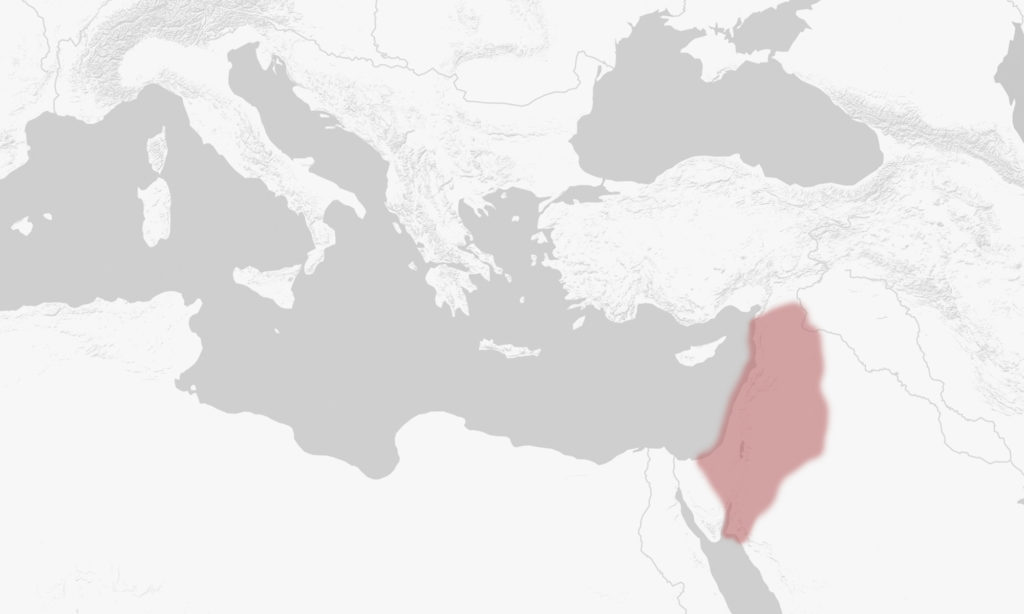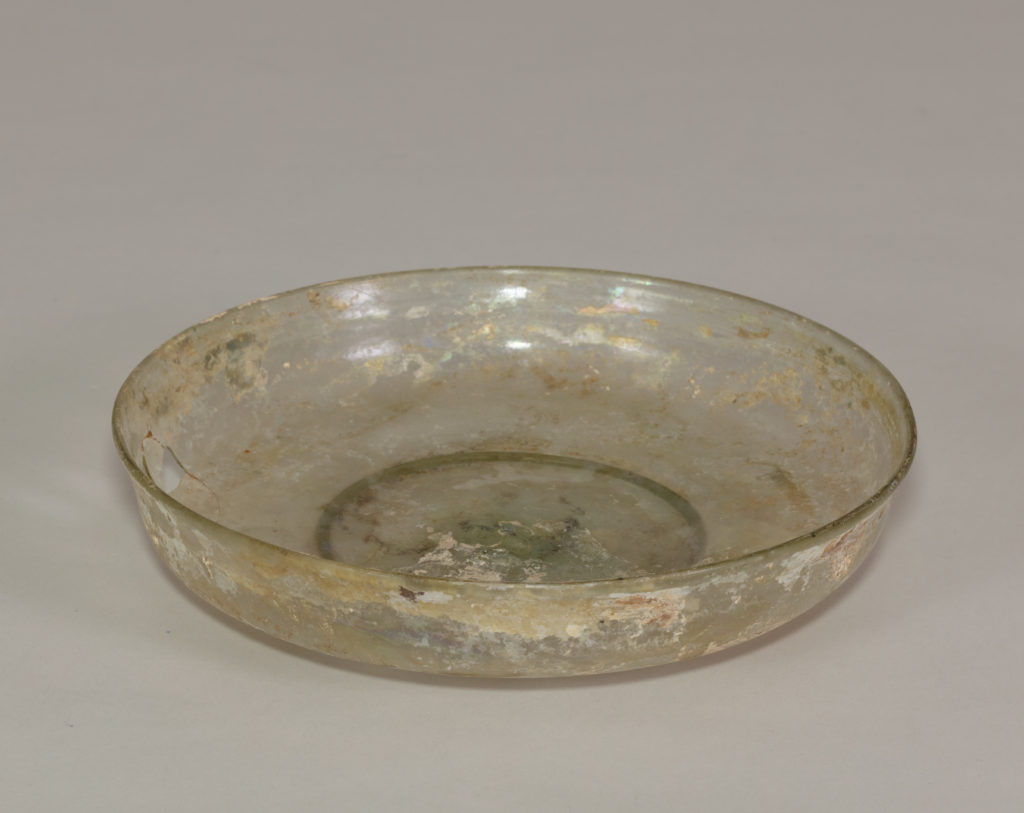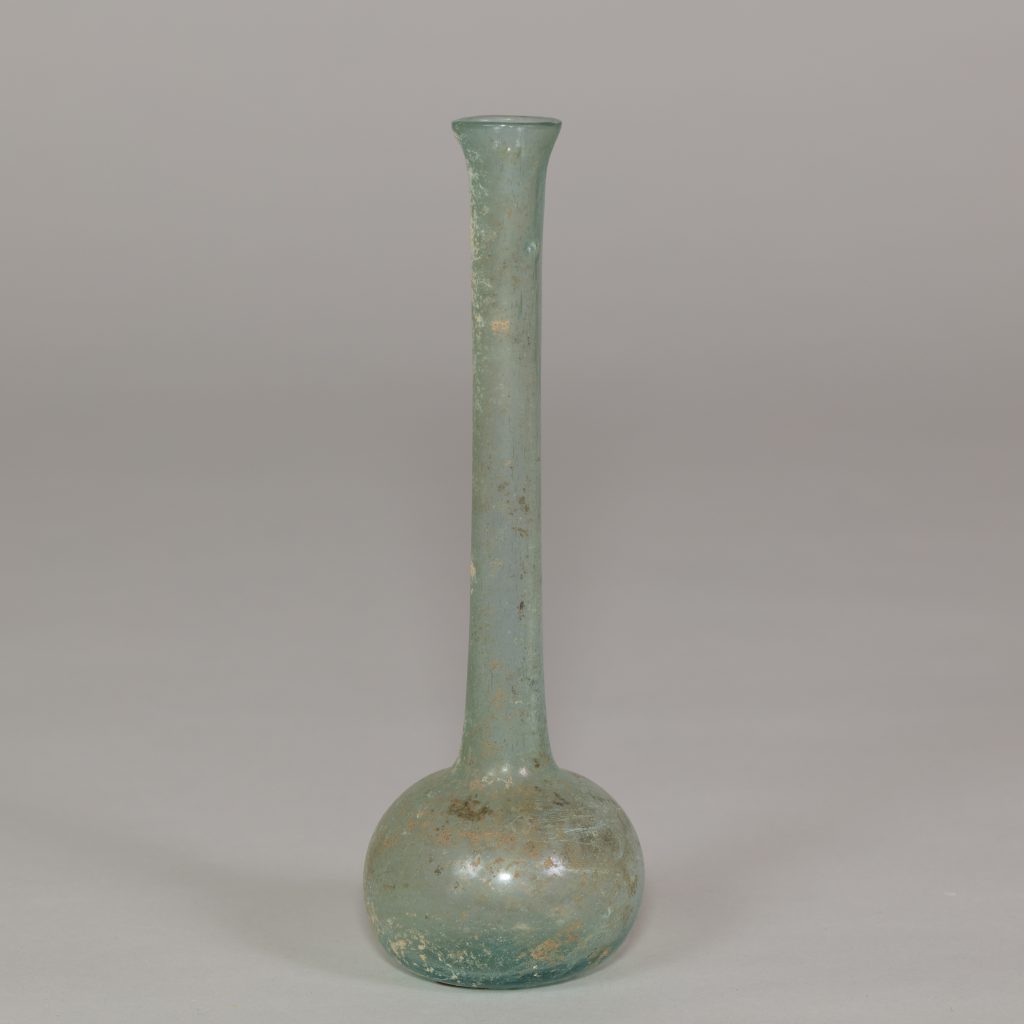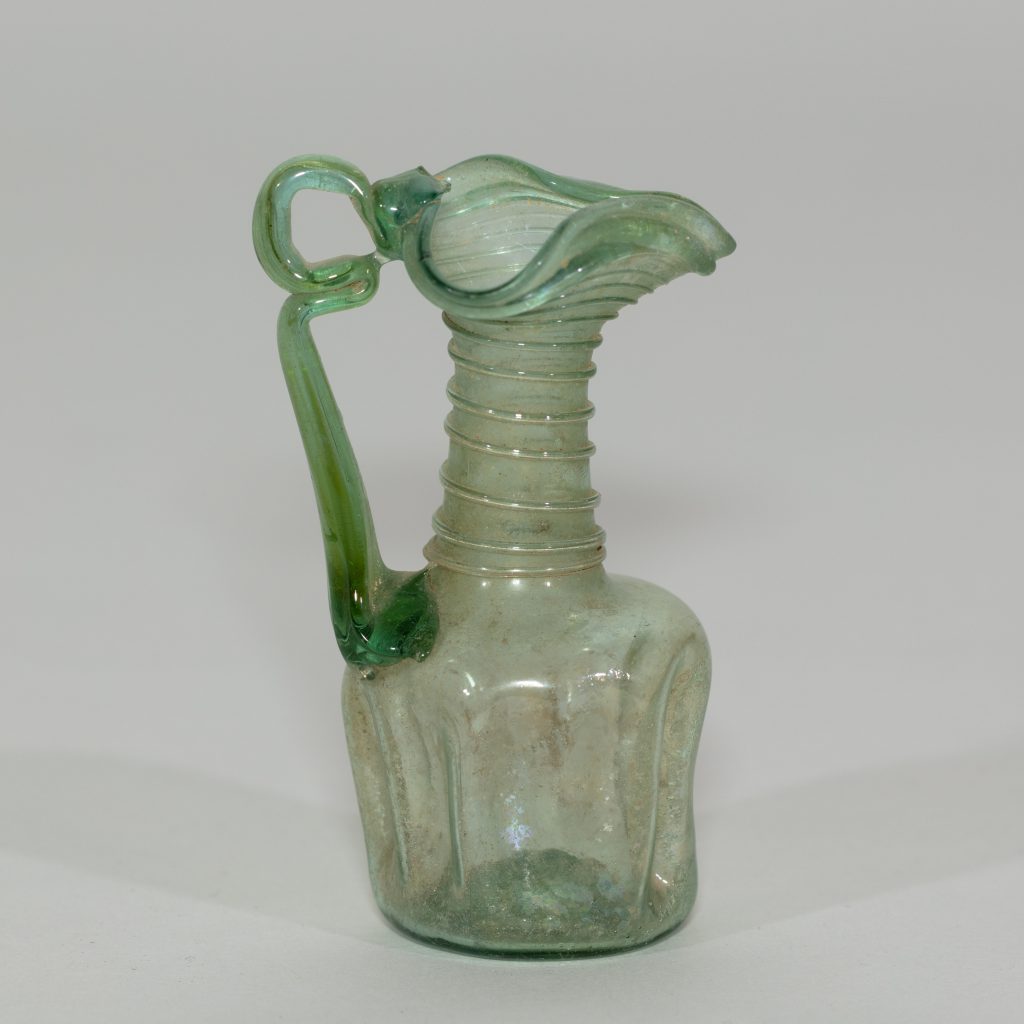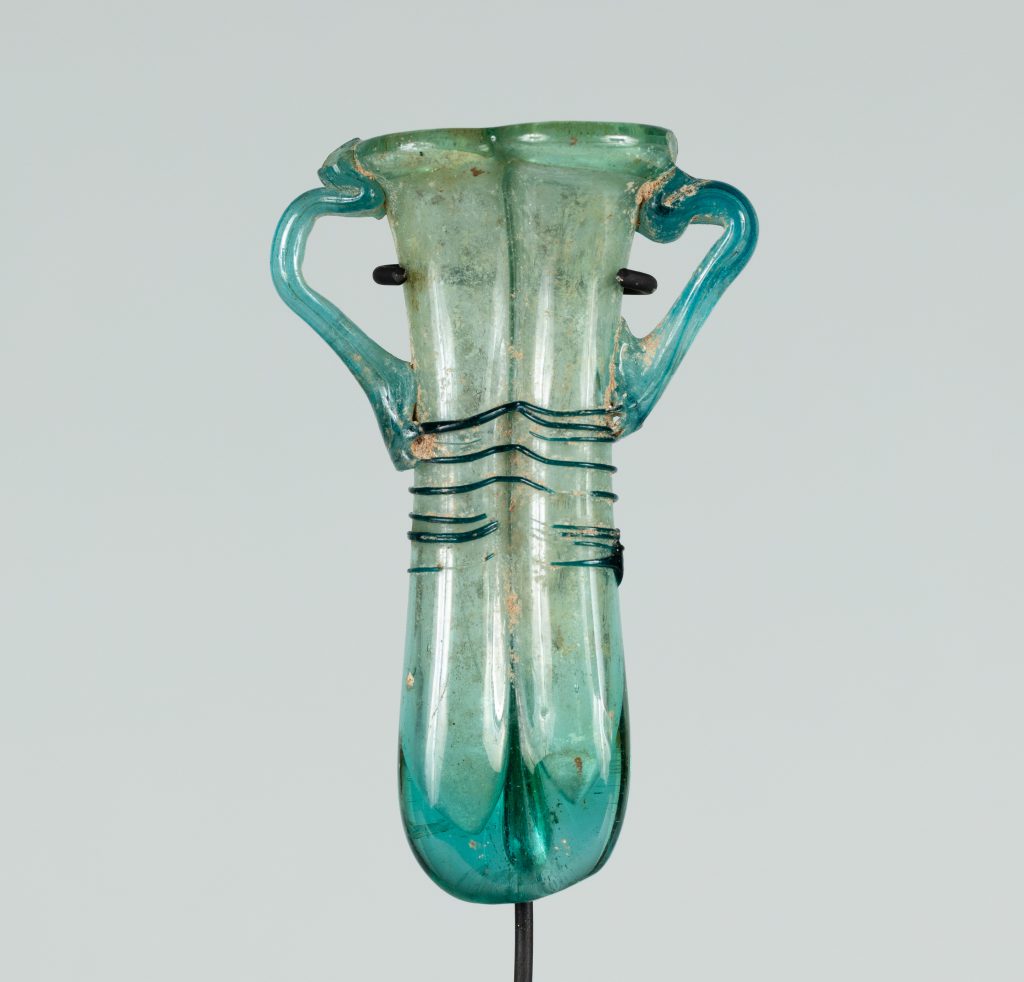
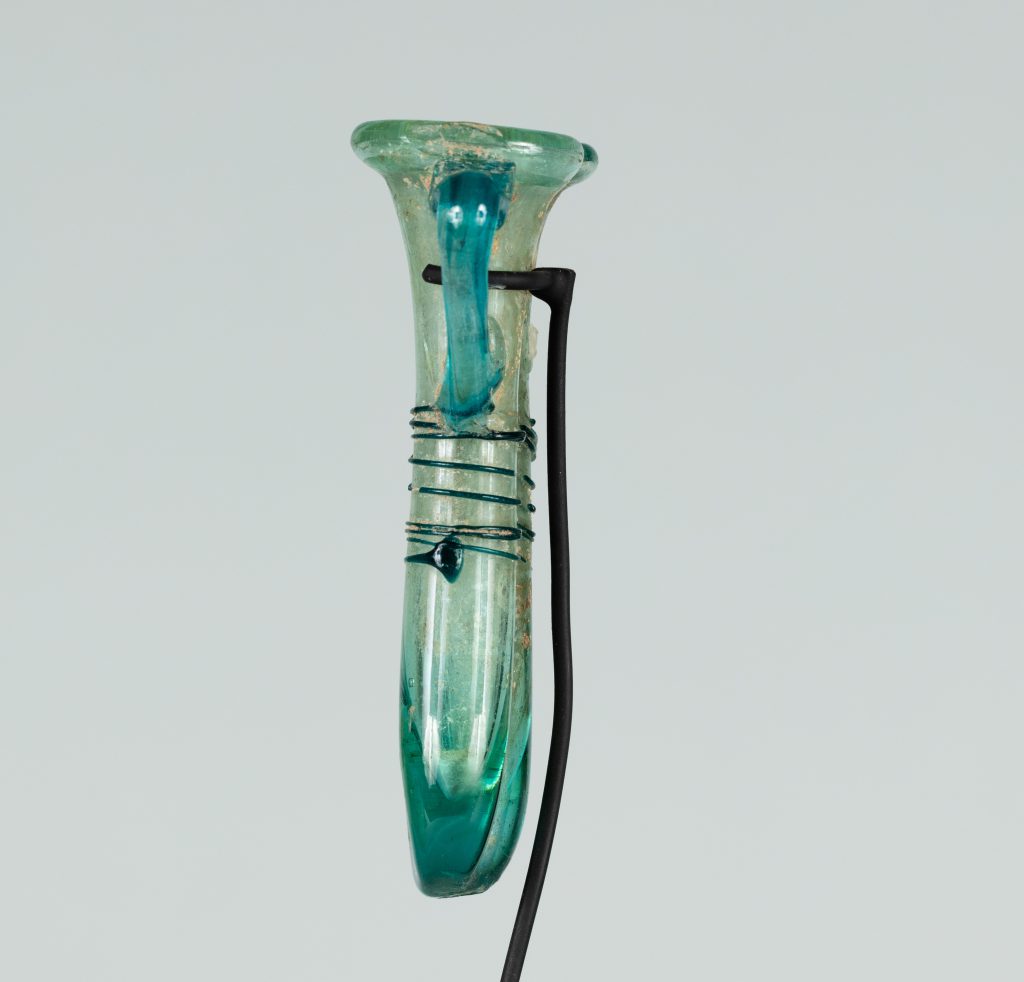
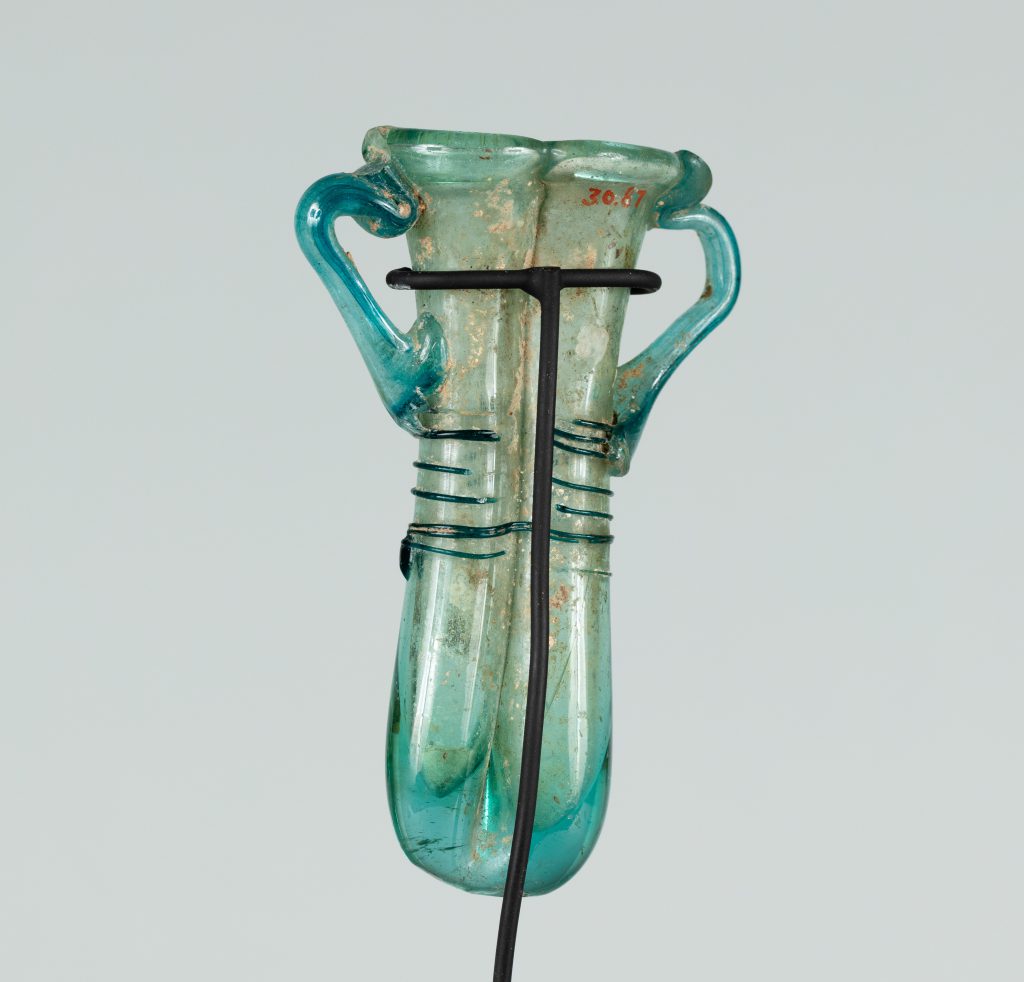

Gift of the Misses Harriet Sarah and Mary Sophia Walker
1894.39Like the small jug with a trefoil rim, this unusual double unguentarium, a small vessel used for storing and dispensing precious perfumes and oils, exhibits the innovative spirit that animated the glass arts in Roman Syria. The vessel was constructed in an ingenious manner in order to contain two different cosmetics, which would have been applied using a special tool dipped into either chamber. To fashion this vessel, a single tube with flaring ends was blown and then folded at the middle to form a base, while handles and a simple decoration in darker glass threads were added afterwards. This form was especially popular in the eastern Mediterranean during the late Roman period and likely originated among artisans working in Tyre or other glass production centers on the coast of Roman Syria.
This vessel is one of thirty-seven glass vessels donated by the sisters Mary Sophia (1839–1904) and Harriet Sarah Walker (1844–1898), on the completion of the Walker Art Building in 1894. The success of the project was indebted to the sisters’ vision of a building devoted “solely to art purposes,” their selection of the architect Charles McKim, and their deep involvement with every aspect of the building’s design. Recognizing the need for art objects of exceptional quality for students at Bowdoin to study, the sisters seeded the Museum collections with many important gifts, both from their own collections and newly acquired works for the occasion.
The glass vessels the sisters acquired for the Museum fall into the latter category and were purchased from the Thomas B. Clarke Fine Arts gallery in New York City. They were reported to be from three sources: German excavations at Limassol in Cyprus in the 1880s, the excavations of Alessandro Palma di Cesnola, also on Cyprus, and from local (unexcavated) collections in and around the city of Tyre in Lebanon. As such, the Walker glass collection represents an excellent cross-section of ancient glass arts, particularly of Roman glass production in the eastern Mediterranean.
Before 1894, likely excavated in Greece, possibly Rhodes; 1894, sold to Mary Sophia Walker by a Mr. Morgan on behalf of the Thomas B. Clarke Fine Arts Gallery, New York; 1894, acquired by the Bowdoin College Museum of Art, gift from Harriet Sarah and Mary Sophia Walker, Brunswick.
Collector
Donors of the Walker Art Building as well as a significant collection of art and antiquities, Mary Sophia Walker (1839–1904) and Harriet Sarah Walker (1844–1898) were among the most significant benefactors in the development of the art collection at Bowdoin.
